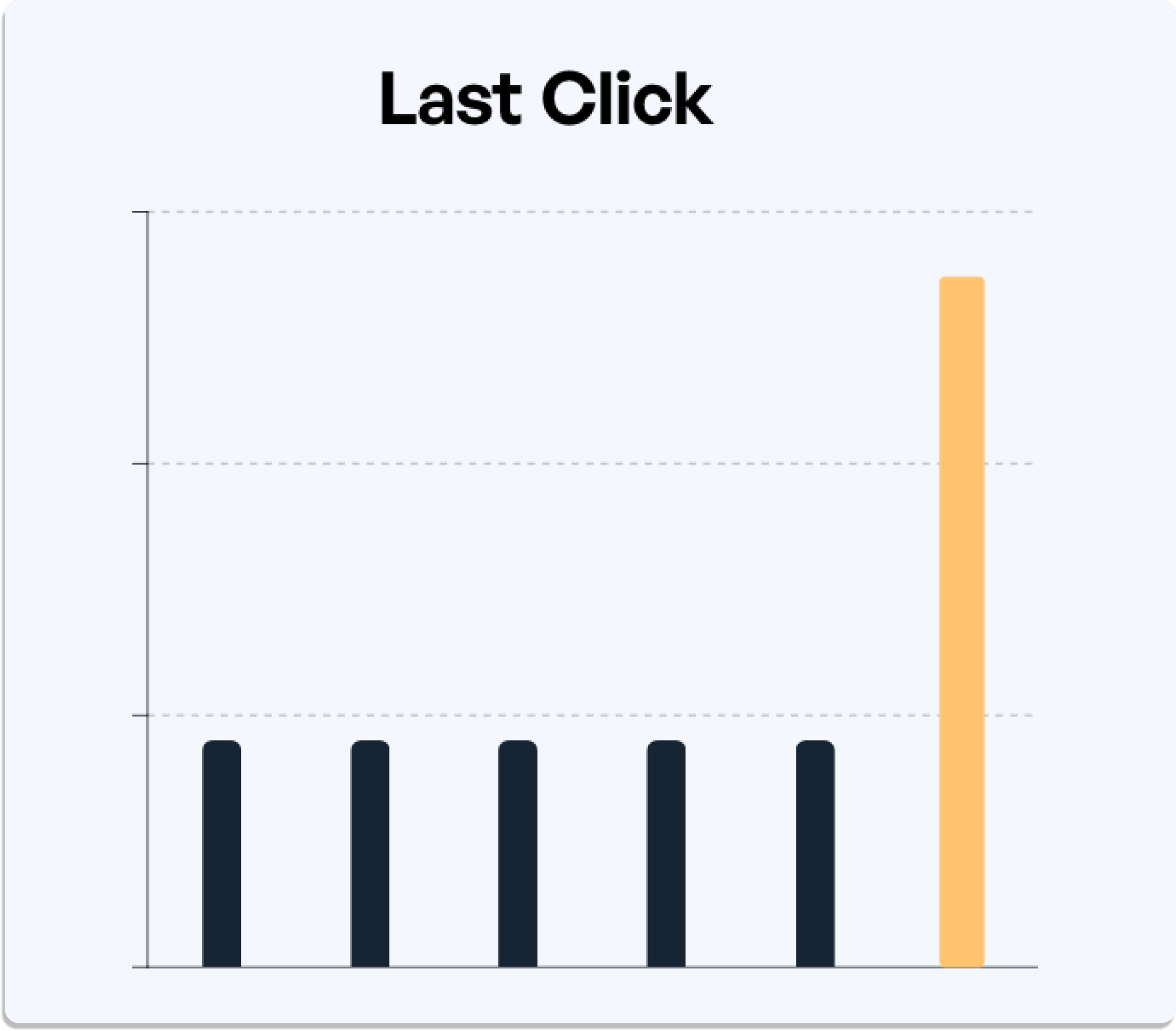A Deep Dive into Attribution Models in Podcast Advertising
Accurately assessing the impact of advertising efforts is crucial, especially in podcast advertising where the listener's journey to conversion is not as direct as clicking an ad.
In podcasting, the path from hearing an ad to making a purchase isn't always linear which makes it essential for marketers to select an attribution model that fits their goals and KPIs. These models help in assessing the effectiveness of podcast advertising across a listener's conversion journey and provide a framework for evaluating the effectiveness of various ads, shows, or campaigns that a listener is exposed to before making a purchase.
Podcast advertising introduces specific attribution challenges due to how audiences engage with the medium. An ad might capture a listener's attention, yet the resulting action could occur much later, complicating the direct association of ad exposure with subsequent conversions. However, with the right pixel-based attribution provider and the right attribution model, you can better understand your full-funnel podcast ad performance and improve ROI.
The Challenge of Podcast Advertising Attribution
Podcast advertising presents unique challenges when it comes to attribution. Unlike traditional online ads that offer a direct link to action, podcast ads require a nuanced approach to track how an ad impression leads to a listener's action, sometimes days or weeks later. The right attribution model helps illuminate the often winding path from ad exposure to purchase, enabling marketers to accurately assess and optimize their advertising ROI.
What is Attribution Modeling?
Attribution modeling is a framework or set of rules that determine how credit for sales and conversions is assigned to touchpoints in conversion paths. In simpler terms, it's a way for marketers to figure out which ads or interactions led a consumer to make a purchase or take a desired action. This process is crucial in understanding the effectiveness of different marketing efforts, especially in mediums like podcasting, where direct interaction with an advertisement doesn't always immediately lead to a purchase.
Determining ROI: Attribution models are critical for linking specific actions taken by listeners directly to the advertisements they encountered, providing a clearer picture of the financial effectiveness of podcast advertising campaigns.
Campaign Optimization: By pinpointing which elements of your campaign are driving conversions, you can fine-tune your spending and strategy to focus on what's working.
Audience Insights: Attribution models can offer insights into listener behavior, such as which types of ads are more effective, what messaging resonates with the audience, and the listener's path from ad exposure to conversion. Moreover, how many times they needed to hear an ad(s) before purchasing - aka frequency. These insights are invaluable for tailoring future campaigns to better meet audience preferences and behaviors.
Attribution Models Available in Podscribe
First-Click (Listen) Attribution: Credits the first podcast ad exposure in the customer's journey, highlighting the importance of initial brand interactions.
Last-Click (Listen) Attribution: Assigns all credit to the last podcast ad before a conversion, emphasizing the impact of final touchpoints.
Multi-Touch Attribution: Distributes credit evenly across all podcast ad exposures, recognizing each touchpoint's role (podcast ad or episode) in the conversion process.
Multi-Touch Time Decay: Allocates more credit to touchpoints closer to the conversion, acknowledging their increased influence on the final decision.
Choosing the Right Attribution Model
The choice of an attribution model should align with your campaign goals, product characteristics, and understanding of the customer journey. Advanced platforms like Podscribe offer the flexibility to switch between models in real-time, enhancing your ability to fine-tune your advertising strategy based on detailed performance insights. Learn More Here.
First-Click Attribution
First-click (or listen) attribution assigns full credit to the very first touchpoint a customer has with a brand. In podcast advertising, it’s the very first ad they heard of a brand. This model is based on the idea that the initial interaction is what sets the customer on the path to conversion. In the context of podcast advertising, if a listener first discovers a product through an ad on a podcast, that initial ad would receive all the credit for any subsequent purchase, highlighting the importance of awareness-stage marketing efforts.
This model emphasizes the impact of initial brand exposure, ideal for assessing how well different podcasts or campaigns succeed in introducing potential customers to a brand.
Reasons to use First-Touch
Identify Awareness Channels
Launching New Products or Entering New Markets
Optimize for Top-of-Funnel Content
Last-Click Attribution
Conversely, last-click attribution gives all the credit to the final touchpoint before conversion. It assumes that the last interaction is the most decisive in driving the customer's decision to make a purchase. For podcast advertisers, this model underscores the value of ads that can directly precede conversion actions, often emphasizing the role of strong calls-to-action in the final stages of the customer journey.
Focusing on the ad that directly precedes a conversion, this model is valuable for understanding which podcasts or ads are the last touchpoints before converting.
Reasons to use last-touch
Prioritize Conversion-Driven Shows
Have a Short Sales Cycles and Low Consideration Product
Measure the Efficacy of Specific Promotions
Optimize for Bottom-of-Funnel Content
Multi-Touch Attribution (Linear)
The standard multi-touch attribution model is founded on the principle of equality among touchpoints. It distributes conversion credit evenly across all interactions a potential customer has with a brand's advertising efforts before making a purchase.
This model recognizes that the path to conversion is complex and involves various forms of engagement with a brand. It acknowledges that each ad exposure, regardless of its position in the customer journey, plays a role in influencing the decision to convert. In podcast advertising, where a listener might be exposed to multiple episodes and ads before converting, this model ensures that each of those touchpoints receives an equal share of the attribution credit.
Reasons to use multi-touch
Comprehensive Cross-Podcast Campaign Performance Analysis
Optimizing the Customer Journey
Allocating Budget Across Shows
Long-Term Marketing Strategy Development
Multi-Touch Time Decay Attribution
The multi-touch time decay model takes a different approach by assigning more credit to touchpoints that occur closer to the time of conversion. Multi-touch Time Decay is the default in Podscribe’s dashboard as its most effective in understanding cross-podcast performance.
Multi-Time Decay operates under the assumption that the most recent interactions have a greater impact on the listener's decision to purchase. As such, the first ad a listener hears would receive the least credit, while the last ad heard before a conversion would receive the most. This model is particularly useful in podcast advertising for understanding which episodes or ads might have been the final nudge a listener needed to make a purchase.
Reasons to use multi-touch time decay
Emphasize the Importance of Closer-to-Conversion Touchpoints
Optimize for the Customer Decision-Making Process
Fine-Tune Retargeting and Remarketing Campaigns
Balance Long-Term Engagement with Immediate Conversions
Which Model Should I Use?
Selecting an attribution model for your brand or advertiser hinges on the specific objectives of the campaign, the characteristics of the product or service, and the typical customer journey. Podscribe's platform supports a variety of attribution models you can toggle and change in real-time, enhancing marketers' ability to assess the efficacy of their podcast advertising endeavors accurately. The choice of an attribution model should be aligned with the campaign's unique goals and requirements. Learn More.
Wrapping Up
Choosing the right attribution model for podcast advertising requires understanding the nuances of how listeners engage with podcast content and how those engagements lead to conversions. Whether you prioritize initial awareness, direct conversions, or the full journey, there's an attribution model to match your goals. Consider your campaign objectives, the nature of your product or service, and the typical customer journey when selecting an attribution model. Podscribe's technology aids in this process by offering detailed insights into how podcast ads influence listener behavior, without overtly dominating the narrative. This enables marketers to make informed decisions based on comprehensive data analysis, ensuring a balanced and effective advertising approach.






